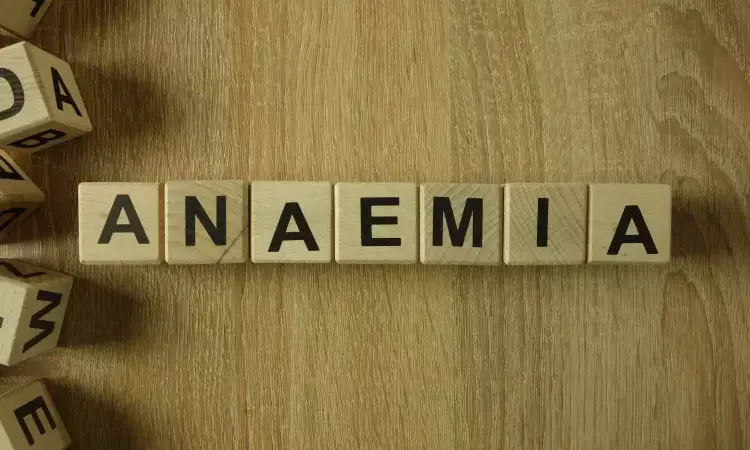- Home
- Medical news & Guidelines
- Anesthesiology
- Cardiology and CTVS
- Critical Care
- Dentistry
- Dermatology
- Diabetes and Endocrinology
- ENT
- Gastroenterology
- Medicine
- Nephrology
- Neurology
- Obstretics-Gynaecology
- Oncology
- Ophthalmology
- Orthopaedics
- Pediatrics-Neonatology
- Psychiatry
- Pulmonology
- Radiology
- Surgery
- Urology
- Laboratory Medicine
- Diet
- Nursing
- Paramedical
- Physiotherapy
- Health news
- Fact Check
- Bone Health Fact Check
- Brain Health Fact Check
- Cancer Related Fact Check
- Child Care Fact Check
- Dental and oral health fact check
- Diabetes and metabolic health fact check
- Diet and Nutrition Fact Check
- Eye and ENT Care Fact Check
- Fitness fact check
- Gut health fact check
- Heart health fact check
- Kidney health fact check
- Medical education fact check
- Men's health fact check
- Respiratory fact check
- Skin and hair care fact check
- Vaccine and Immunization fact check
- Women's health fact check
- AYUSH
- State News
- Andaman and Nicobar Islands
- Andhra Pradesh
- Arunachal Pradesh
- Assam
- Bihar
- Chandigarh
- Chattisgarh
- Dadra and Nagar Haveli
- Daman and Diu
- Delhi
- Goa
- Gujarat
- Haryana
- Himachal Pradesh
- Jammu & Kashmir
- Jharkhand
- Karnataka
- Kerala
- Ladakh
- Lakshadweep
- Madhya Pradesh
- Maharashtra
- Manipur
- Meghalaya
- Mizoram
- Nagaland
- Odisha
- Puducherry
- Punjab
- Rajasthan
- Sikkim
- Tamil Nadu
- Telangana
- Tripura
- Uttar Pradesh
- Uttrakhand
- West Bengal
- Medical Education
- Industry
Smartphone colorimetry of face can help earlier detection of anaemia in children

UK: Anemia screening in infants and young children could be made possible using a set of smartphone images, a recent study published in PLOS ONE has suggested.
"Our results suggest that smartphone calorimetry will likely be a useful tool for the wide availability of anaemia screening," the researchers from Ghana wrote in their study.
The study brought together researchers and clinicians at UCL Engineering, UCLH and Korle Bu Teaching Hospital, Ghana, to investigate a new non-invasive diagnostic technique using smartphone photographs of the eye and face.
The advance could make anaemia screening more widely available for children in Ghana (and other low- and middle-income countries), where there are high rates of the condition due to iron deficiency, as the screening tool is much cheaper than existing options and delivers results in one sitting.
The paper builds on previous successful research undertaken by the same team exploring using an app-neoSCB-to detect jaundice in newborn babies.
Anaemia is a condition causing a reduced concentration of haemoglobin in the blood, which means oxygen is not transported efficiently around the body.
It affects two billion people globally and can significantly impact children's developmental outcomes, increasing their susceptibility to infectious diseases and impairing their cognitive development.
Iron deficiency is the most common cause of anaemia globally, but other conditions such as blood loss, malaria and sickle-cell disease also contribute.
First author, PhD candidate Thomas Wemyss (UCL Medical Physics & Biomedical Engineering) said: “Smartphones are globally popular, but research using smartphone imaging to diagnose diseases shows a general trend of experiencing difficulty when transferring results to different groups of people.
“We are excited to see these promising results in a group often underrepresented in smartphone diagnostics research. An affordable and reliable technique to screen for anaemia using a smartphone could drive long-term improvements in quality of life for a large number of people.”
Traditionally, diagnosis of anaemia requires blood samples to be taken, which can be costly for patients and healthcare systems. It can create inequalities related to the expense of travelling to the hospital for a blood test. Often families need to make two trips, to have a blood sample taken and then to collect their results due to samples being transported between the clinic and the laboratory for analysis.
In the 1980s, a handheld device, the HemoCue, was developed to provide more immediate results, but this carries high upfront and ongoing costs and still needs a finger-prick blood sample.
The researchers knew that haemoglobin has a very characteristic colour due to how it absorbs light. Hence, they aimed to develop a procedure to take smartphone photographs and use them to predict whether anaemia is present.
They analysed photos taken from 43 children under four recruited to participate in the study in 2018. The images were of three regions where minimal skin pigmentation occurs in the body (the white of the eye, the lower lip and the lower eyelid).
The team found that when these were evaluated together to predict blood haemoglobin concentration, they could successfully detect all cases of individuals with the most severe classification of anaemia and detect milder anaemia at rates likely to be clinically useful.
Principal investigator Dr Terence Leung (UCL Medical Physics & Biomedical Engineering) said: “Since 2018, we’ve been working with the University of Ghana on affordable ways to improve healthcare using smartphones. Following our success in screening neonatal jaundice, we are excited that the smartphone imaging technique can also apply to anaemia screening in young children and infants.”
Senior author Dr Judith Meek (UCLH) added: “Anaemia is a significant problem for infants, especially in low- and middle-income countries. We hope this sort of technology will lead to earlier detection and treatment in the near future.”
Reference:
Thomas Alan Wemyss ,Miranda Nixon-Hill,Felix Outlaw,Anita Karsa,Judith Meek,Christabel Enweronu-Laryea,Terence S. Leung Published: March 3, 2023 https://doi.org/10.1371/journal.pone.0281736
Dr Kamal Kant Kohli-MBBS, DTCD- a chest specialist with more than 30 years of practice and a flair for writing clinical articles, Dr Kamal Kant Kohli joined Medical Dialogues as a Chief Editor of Medical News. Besides writing articles, as an editor, he proofreads and verifies all the medical content published on Medical Dialogues including those coming from journals, studies,medical conferences,guidelines etc. Email: drkohli@medicaldialogues.in. Contact no. 011-43720751


